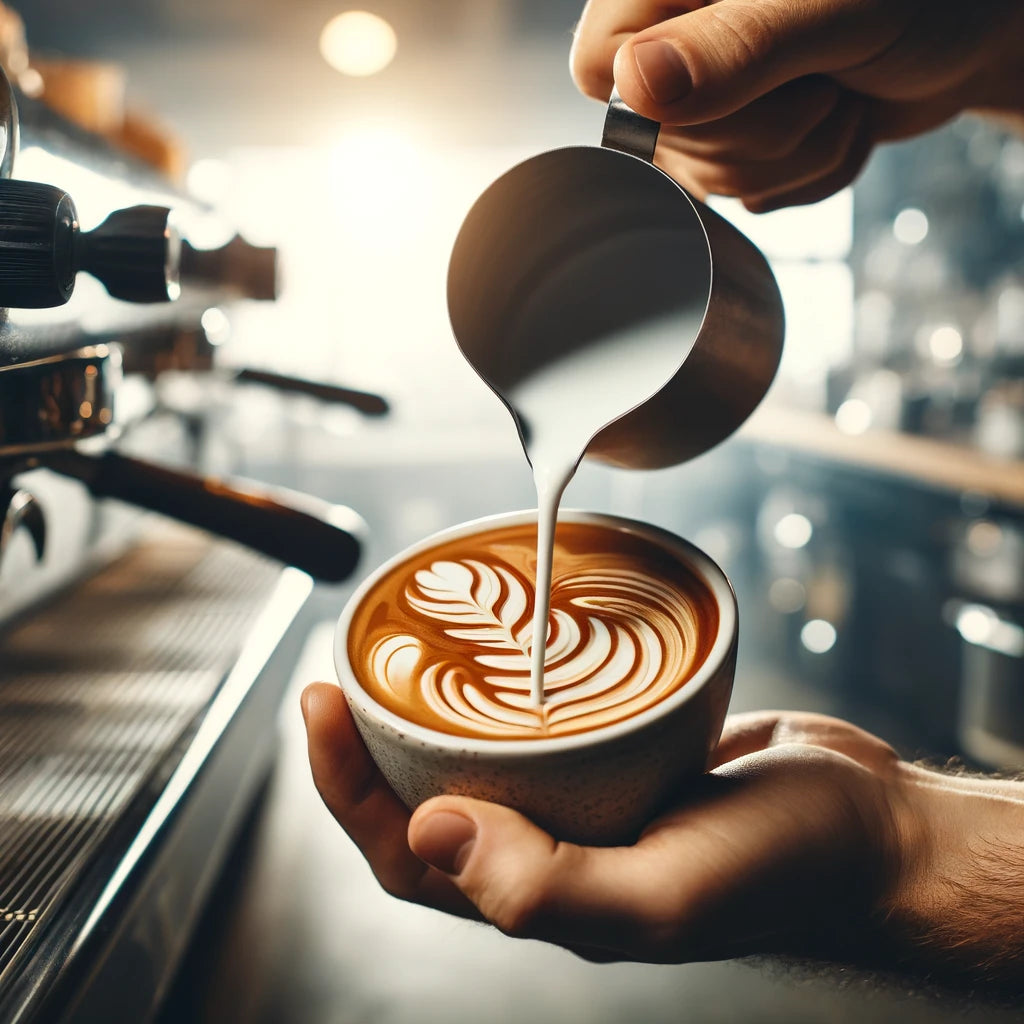
The Art and Craft of Latte Art: Bringing Creativity to Every Cup
Share
Latte art, the skillful technique of pouring steamed milk into espresso to create visually stunning patterns, has become a signature of coffee culture worldwide. More than just a beautiful presentation, latte art enhances the coffee experience, blending aesthetics with the rich, inviting flavors of coffee. This detailed guide dives into the world of latte art, exploring its origins, techniques, and tips for mastering this creative endeavor.
A Brief History of Latte Art
Latte art began to take shape in the 1980s and 1990s, thanks to the innovation and creativity within the burgeoning specialty coffee scene. David Schomer, the owner of Espresso Vivace in Seattle, is often credited with pioneering the technique in the United States. Schomer was inspired by the baristas in Italy and began refining the method of frothing milk to create perfect microfoam—the key to successful latte art.
As espresso machines improved and became more accessible, the practice of latte art spread globally, becoming a symbol of a barista's skill and a coffee shop's attention to detail. Today, it's not only a testament to the quality of the coffee but also an expression of personal creativity and a point of interaction between baristas and customers.
Understanding the Basics
Latte art is created by pouring steamed milk into a shot of espresso. The contrast between the dark espresso and the white milk allows for the creation of various patterns—from simple hearts to intricate rosettas and beyond.
Essential Tools:
- Espresso Machine: A good machine with a powerful steam wand is crucial.
- Milk Jug: A stainless steel jug with a spout that allows for precision.
- Fresh Coffee: The quality of the espresso is as important as the milk.
- Whole Milk: The fat content in whole milk makes it ideal for creating smooth, velvety microfoam.
Techniques and Patterns
The beauty of latte art lies in the technique. Here’s how you can start with basic patterns and advance to more complex designs:
1. The Heart
The heart is one of the simplest designs to master and a great starting point for beginners.
- Technique: Start by tilting the cup slightly. Begin pouring the milk from a height, then bring the jug closer to the surface as the cup fills. Once the milk starts to show on the surface, make a quick strike through the center of the pour to create a heart shape.
2. The Rosetta
This leaf-like pattern is a classic and shows a barista's skill.
- Technique: Similar to the heart, begin by pouring from a height. As the cup fills, shake the jug back and forth to create a wavy line, then finish by drawing the jug through the pattern to create the stem of the rosetta.
3. The Tulip
The tulip consists of multiple layers and is a progression from the heart.
- Technique: Start with the heart technique, but interrupt the flow by stopping the pour briefly. Repeat this process several times to create layers, and finish with a strike through the middle.
Advanced Techniques
As skills develop, baristas experiment with combining patterns, adding color (using syrups or powders), and even creating three-dimensional designs. Techniques like etching, where tools are used to draw on the milk, or free pouring, which relies entirely on the flow of milk, can add complexity and uniqueness to each cup.
Tips for Perfecting Your Latte Art
- Practice Milk Steaming: Achieving the right microfoam texture is crucial. The milk should be glossy and smooth, without large bubbles.
- Control Your Pour: The height, speed, and position of your pour affect the outcome. Start high to mix the milk and espresso, then come close to make designs.
- Maintain Freshness: Freshly brewed espresso is vital as it has a stable crema that holds the design well.
- Experiment: Each type of milk and coffee behaves differently. Experiment with various milks like soy, almond, or oat to see how they froth and hold designs.
Engaging with the Community
Latte art competitions and social media platforms have become popular avenues for baristas to showcase their skills and creativity. Participating in or following these events can provide inspiration and a sense of community among coffee enthusiasts.
Conclusion
Latte art is more than just a skill—it's a passion that adds value to every cup of coffee. It represents a bridge between barista and customer, offering a moment of beauty that enhances the overall coffee experience. Whether you're a professional barista or a home coffee lover, mastering latte art can be a rewarding and enjoyable pursuit, turning each coffee into a work of art.
